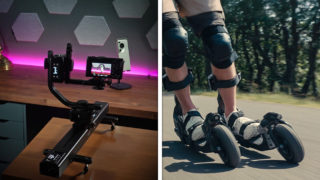Clint Eastwood, a name synonymous with grit and enduring style, also knows his way around a car collection. His fleet shows off more than fancy metal and engines. These cars tell stories of personal connections and historical significance. Want proof of his dedication? He once turned down millions for his prized Cobra.
That refusal reveals how much these vehicles really mean to him. His collection teaches real lessons about smart classic car investments and building a lasting legacy. Eastwood’s passion connects his film career with rare automotive gems in ways most collectors only dream about.
9. 1968 Ford Mustang GT 390 ‘Bullitt’ (Exterior)
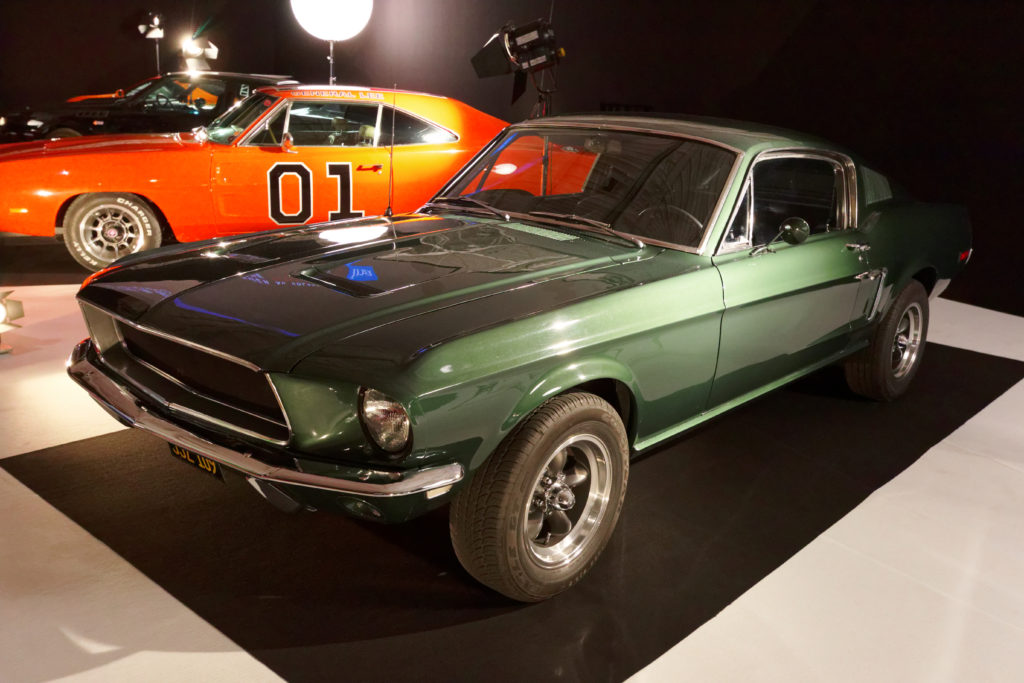
Automotive treasures rarely possess cinematic gravitas quite like the Highland Green 1968 Mustang GT 390. The genuine ‘Bullitt’ Mustang, often included among the rarest cars of all time, looks exactly as it did during that famous San Francisco chase scene.. No fancy badges. No racing stripes. Nothing to distract from its pure muscle car presence.
Steve McQueen himself drove this car through those tire-squealing jumps and turns. The clean, understated look hides serious performance underneath – kind of like how Bruce Wayne dresses normally despite being Batman. This Mustang didn’t just appear in a movie; it became a character all its own.
1968 Ford Mustang GT 390 ‘Bullitt’ (Interior)
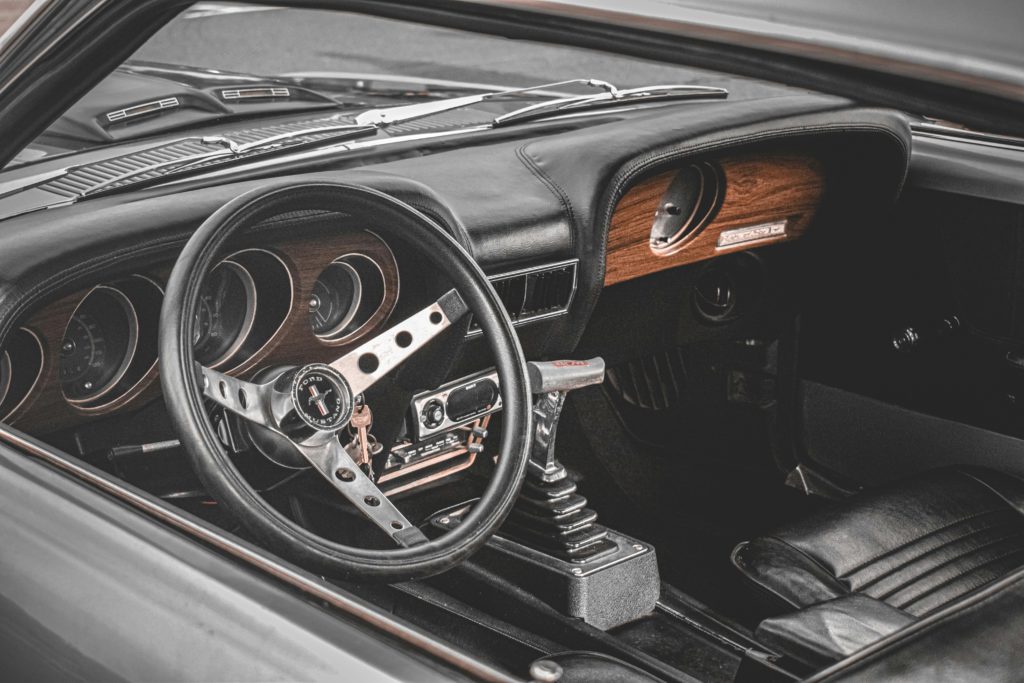
Slide behind the wheel of this Mustang, and you’re instantly transported to those famous San Francisco streets McQueen once commanded. The three-spoke steering wheel and that iconic shifter remain exactly as they were when McQueen grabbed them for those famous driving scenes. Sitting inside feels like touching a piece of Hollywood.
All the gauges and controls stay true to their 1968 roots. Clint found this car in 2018 after it had disappeared for decades. It sat forgotten in a Kentucky barn since 1974. Finding this car was like discovering that your grandparents kept an original Honus Wagner baseball card in their attic all these years.
8. 1971 Ferrari 365 GTB/4 Daytona Competizione (Exterior)

If you’re a collector seeking the holy grail of Ferrari racing development, this Daytona Competizione represents one of just three factory-built lightweight examples ever created. It turns heads with its purposeful, competition-ready body. As one of just three factory lightweight Daytonas ever built, it features hand-formed aluminum panels and plexiglass windows to save weight.
The sleek nose houses those distinctive covered headlights, while the back keeps things tight with simple twin taillights. Every curve exists for performance, not just looks. This car has grown in value faster than a Silicon Valley startup, proving some investments just need time to develop their full flavor.
1971 Ferrari 365 GTB/4 Daytona Competizione (Interior)
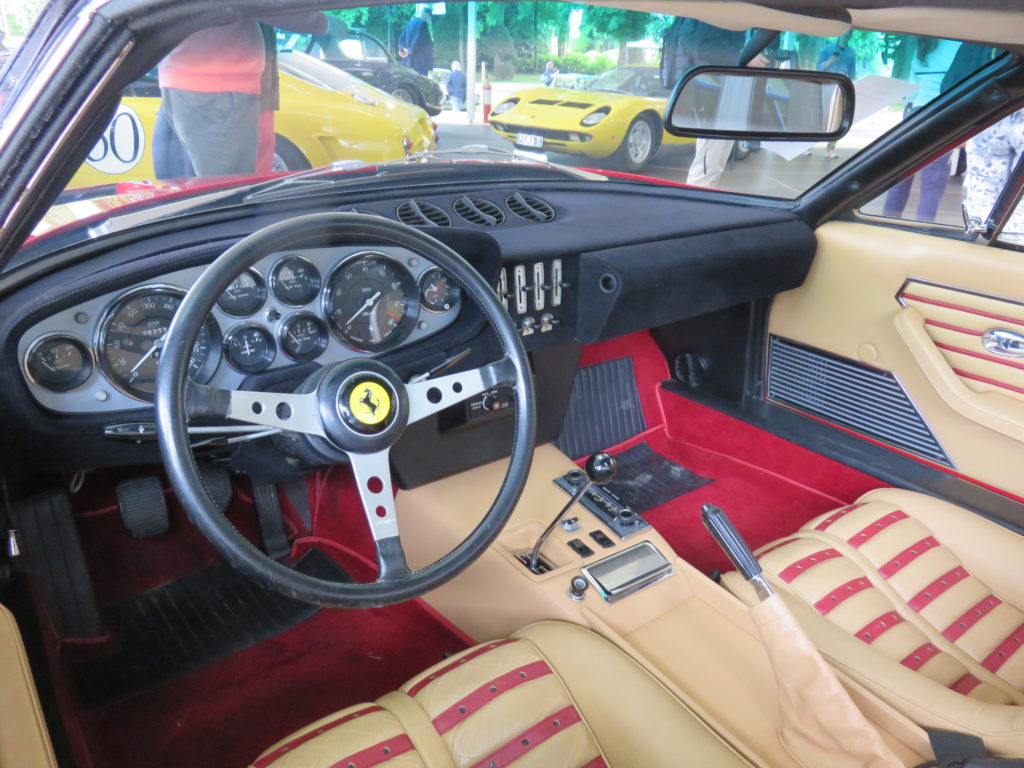
The stripped-down, race-focused cockpit of the Daytona eliminates every unnecessary ounce while connecting you directly to Ferrari’s competition heritage. Racing seats replace comfort-focused ones. Metal surfaces stay exposed. Sound insulation? Who needs it when you have a race-tuned V12 providing the soundtrack? The oversized Momo steering wheel and tall shifter dominate the space.
The backstory gets better. Clint found this gem in Italy, stashed away in an actual chicken coop since 1975. Even more surprising? Enzo Ferrari’s handwritten notes still lived in the engine bay. That’s not just provenance – that’s automotive royalty leaving their fingerprints on history.
7. 1967 Ford GT40 MKIII (Exterior)

Mass-produced supercars might claim exclusivity, but the GT40 MKIII prototype delivers genuine rarity with just seven examples ever built. The shape stands just 40 inches tall (hence the name) with a shape that looks fast even standing still. Those round headlights and hungry air intakes mean business, while the metallic blue paint shows off every curve perfectly.
As one of only seven GT40 MKIII street cars ever made, this car represents the road-going version of Ford’s Le Mans champion. The experimental aluminum body makes it special even among GT40s. This car looks ready to race against anything on wheels – much like how John Wick remains prepared for action even when outnumbered.
1967 Ford GT40 MKIII (Interior)

Climb into the offset seating position of the GT40, and you’ll immediately understand why this car dominated Le Mans for four consecutive years. The driver sits offset to make room for the transmission. Toggle switches line the center console like you’re preparing for takeoff. The leather bucket seats offer just enough padding to keep your spine intact during spirited driving.
At just 2200 pounds, this lightweight beast delivers serious performance. The story gets better: Clint rescued it from a Ford engineer who kept it hidden for 30 years. This car represents the automotive equivalent of finding the lost Ark – except Eastwood didn’t need to outrun any boulders to secure it.
6. 1957 Mercedes-Benz 300 SL Roadster (Exterior)
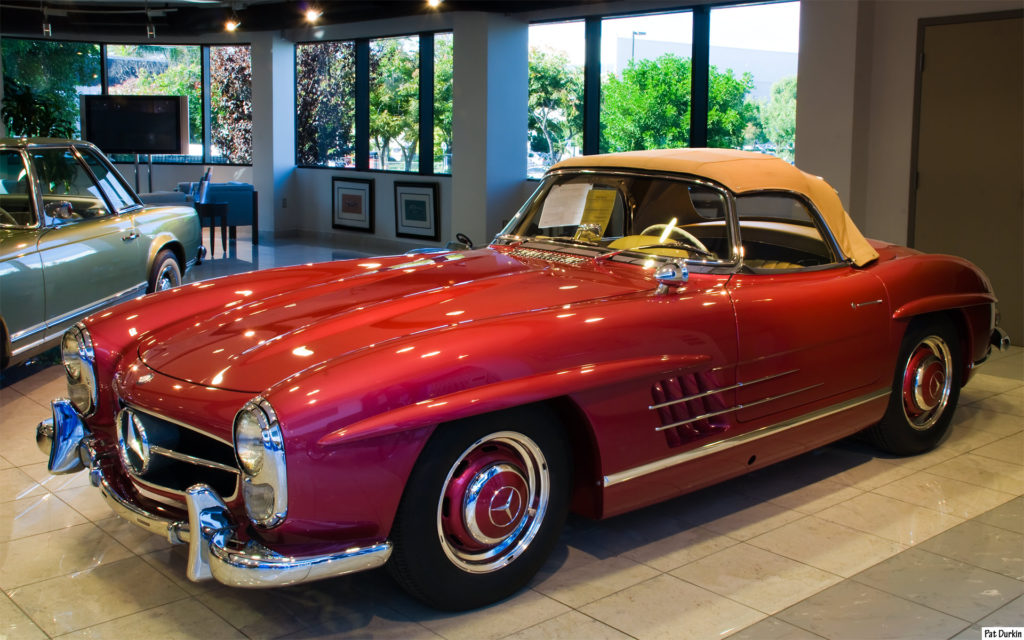
Widely considered the most beautiful convertible ever created, the aluminum-bodied 300 SL Roadster represents just 29 examples of Mercedes’ pinnacle achievement. Being one of only 29 aluminum-bodied examples makes it even more special – these lightweight bodies catch sunlight in ways the standard steel cars simply can’t match.
Originally ordered by Clark Gable himself, the silver finish highlights every curve and character line. Those side gills actually serve a purpose – releasing engine heat during hard driving. This car has appreciated 8% annually for decades, more reliably than most retirement accounts.
1957 Mercedes-Benz 300 SL Roadster (Interior)
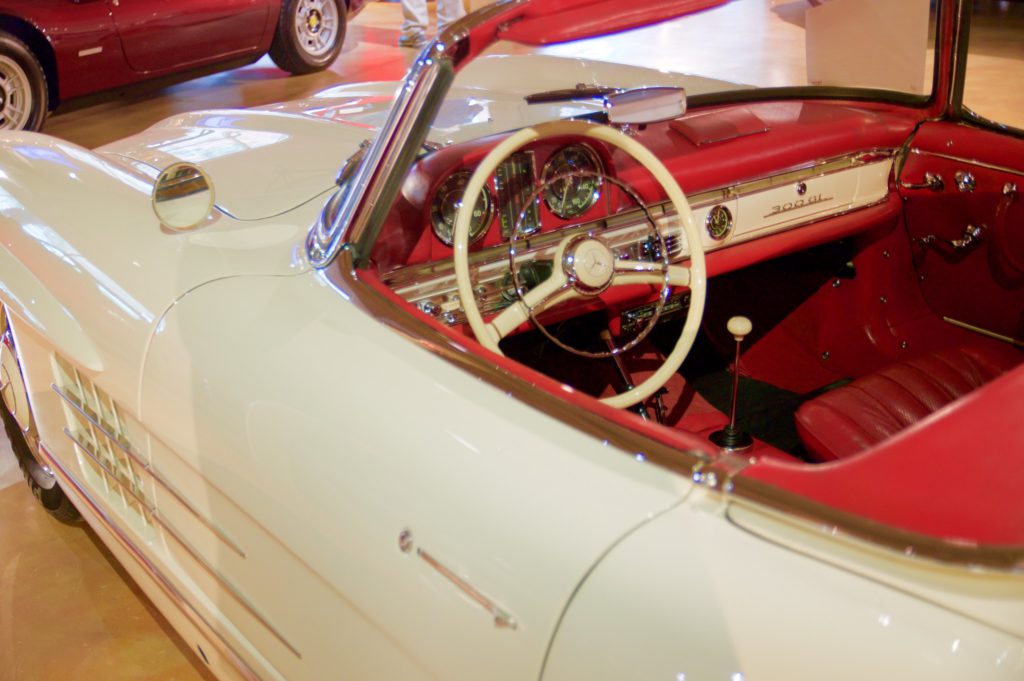
The 300 SL’s hand-stitched red leather interior offers both period luxury and the perfect contrast to its silver exterior, creating a combination that’s proven irresistible to collectors for decades. The big steering wheel and clear gauges remind you this car came from engineering-focused Mercedes.
Clint discovered this beauty in 1977, hidden away in a Beverly Hills garage in remarkably original condition. It had even starred at Paris Auto Show before coming to America. Sitting in this car feels like stepping into a time machine built by craftsmen who refused to cut corners. (And who apparently never heard of cup holders.)
5. 1970 Ford Mustang Boss 429 (Exterior)
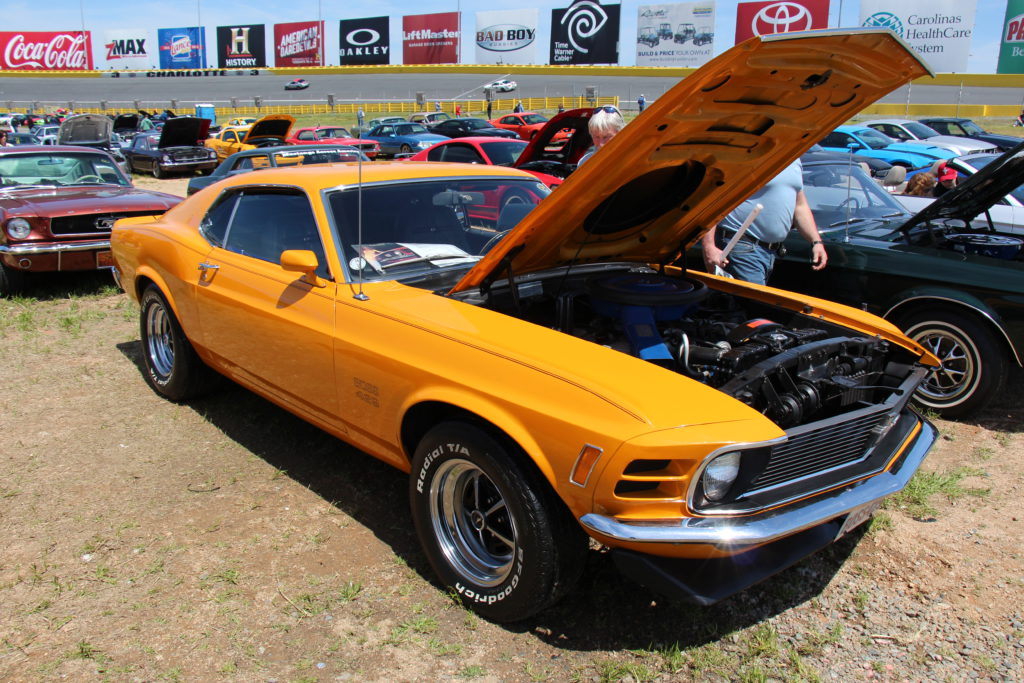
For muscle car aficionados seeking the ultimate Ford performance package, the Ford Mustang Boss 429’s massive hood bulge signals something special lurking beneath. The special Grabber Blue paint – mixed specifically for this car – ensures nobody misses it coming down the street. Clean sides with minimal chrome let the bold shape speak for itself.
As one of the first 10 Boss 429s ever built, this car features early production details later models didn’t get. The wheels tuck under specially flared fenders to accommodate the competition-inspired suspension. This isn’t just rare – it’s the automotive equivalent of finding a four-leaf clover inside a needle in a haystack.
1970 Ford Mustang Boss 429 (Interior)
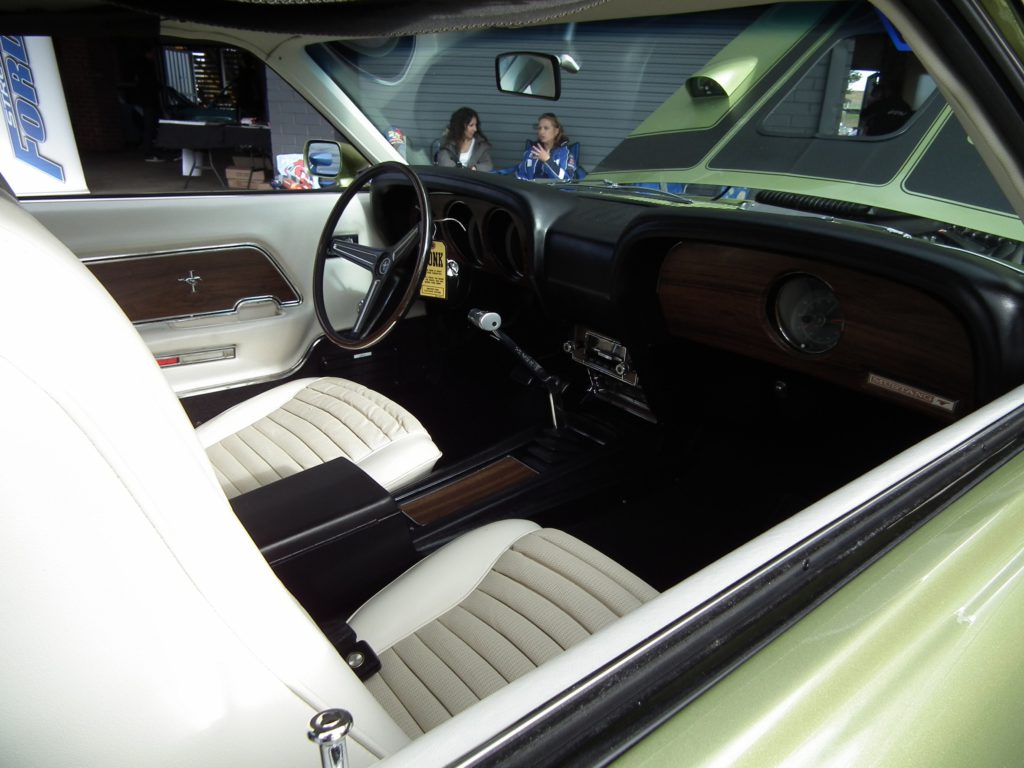
The Boss 429’s black vinyl high-back bucket seats keep you firmly planted during the neck-snapping acceleration this NASCAR-derived engine delivers. The wood-rimmed steering wheel adds an unexpected touch of class, while the simple gauge layout keeps your focus on the road ahead.
The 429 cubic inch NASCAR-derived V8 officially made 375 horsepower. Dyno testing revealed the truth: 465 actual horsepower. Ford played this trick like a poker player hiding a royal flush – keeping insurance companies from seeing the car’s true potential. Even the battery relocated to trunk to make room for that monster engine.
4. 1963 Shelby Cobra 289 Factory Competition (Exterior)
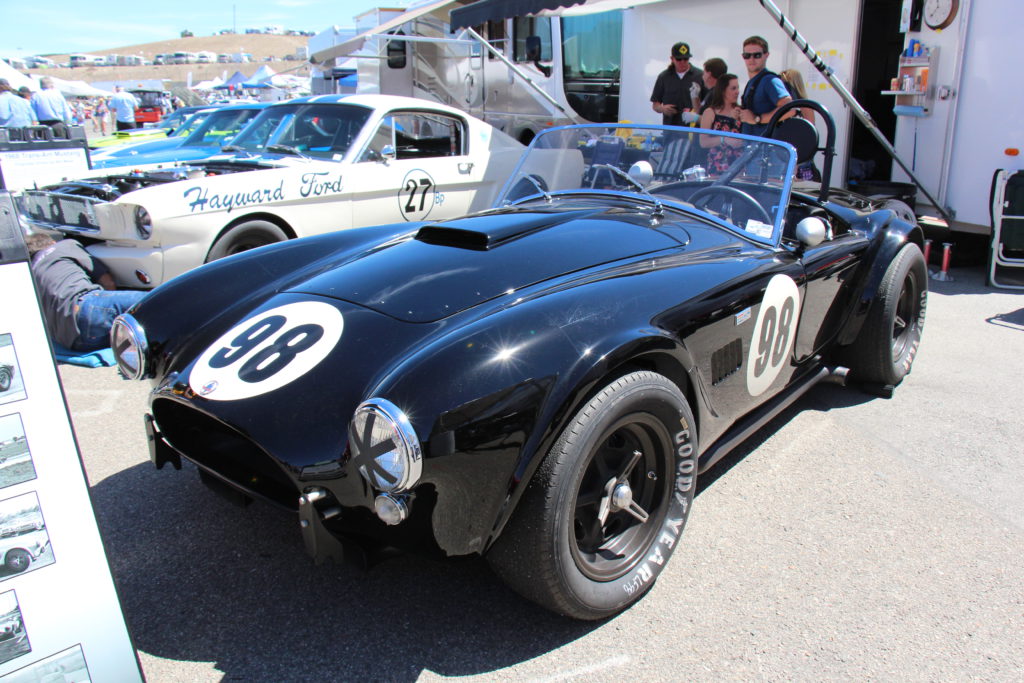
Finding genuine race cars with documented competition history challenges even serious collectors, but this Factory Competition Cobra delivers impeccable provenance directly from Carroll Shelby himself. The Guardsman Blue paint covers hand-formed aluminum panels shaped specifically for racing. Side pipes exit just below the doors, ready to spit flames with each downshift.
Being one of only six factory competition 289 Cobras makes this basically unobtainable today. Its compact dimensions hide its performance potential. Carroll Shelby personally presented it to Clint in 1965 – like having Thomas Edison deliver your custom-made light bulb and show you how to use it.
1963 Shelby Cobra 289 Factory Competition (Interior)
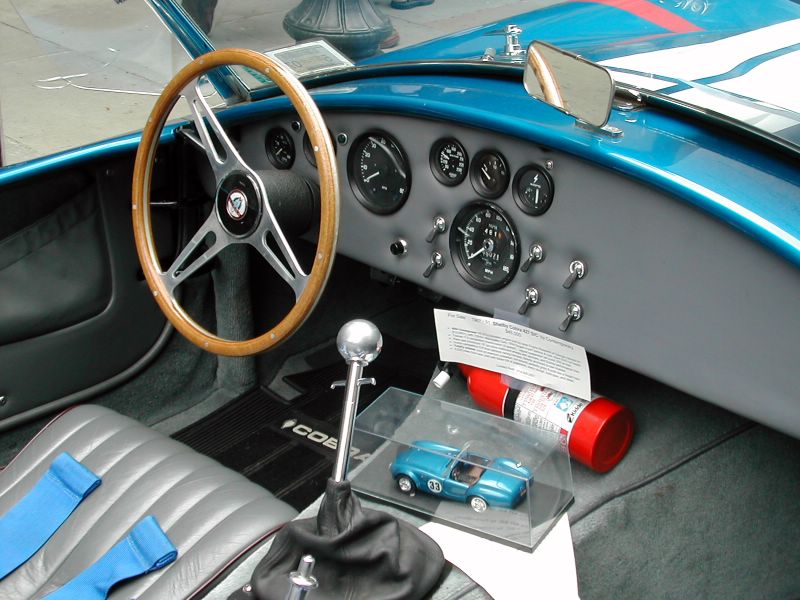
Racing minimalism reaches its perfect expression in the Competition Cobra’s cockpit, featuring nothing that doesn’t contribute to going faster. A simple dashboard houses authentic Smith gauges with white markings on black faces. The wooden steering wheel provides the only hint of comfort in an interior focused entirely on going fast and winning.
This Cobra weighs only 29 pounds more than a modern Miata despite being built over 60 years earlier. Its value has jumped more than 3000% since Eastwood bought it. Today, you could buy a decent house for what just the correct racing seats would cost. (And people complain about inflation at the grocery store.)
3. 1956 Jaguar XKSS (Exterior)
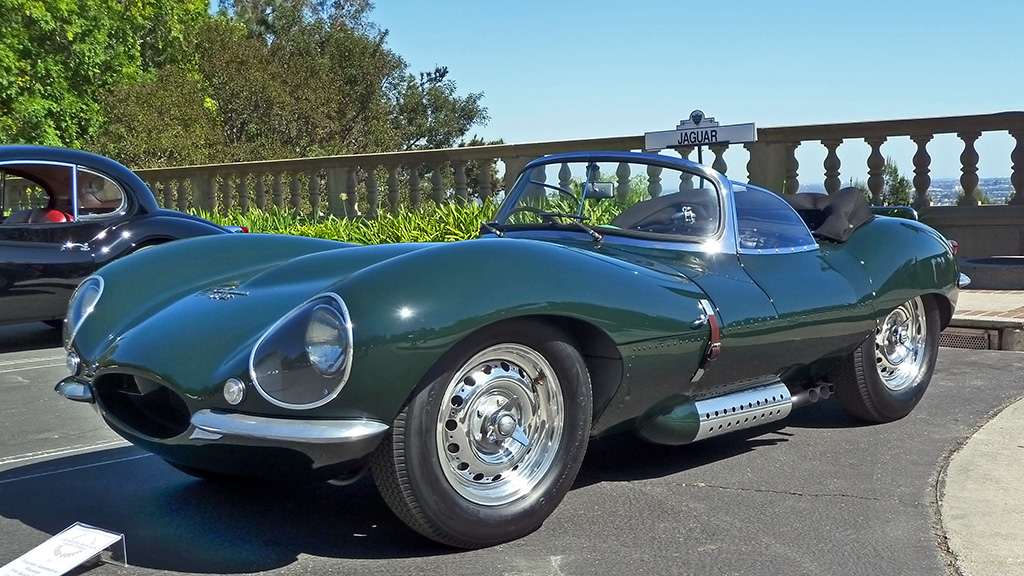
Drive through any exclusive gathering of classic cars in this British racing green XKSS, and watch as even the rarest Ferraris suddenly become background scenery. British racing green paint covers curves that make modern designers jealous. The long hood and short deck create perfect visual balance, while the side-exit exhaust reminds you of its racing DNA.
As one of only 16 XKSS models ever completed, this car survived the factory fire that destroyed nine others. The distinctive covered headlights and wide oval grille make it instantly recognizable. This car looks like what James Bond would drive on his day off – sophisticated yet ready for action at a moment’s notice.
1956 Jaguar XKSS (Interior)
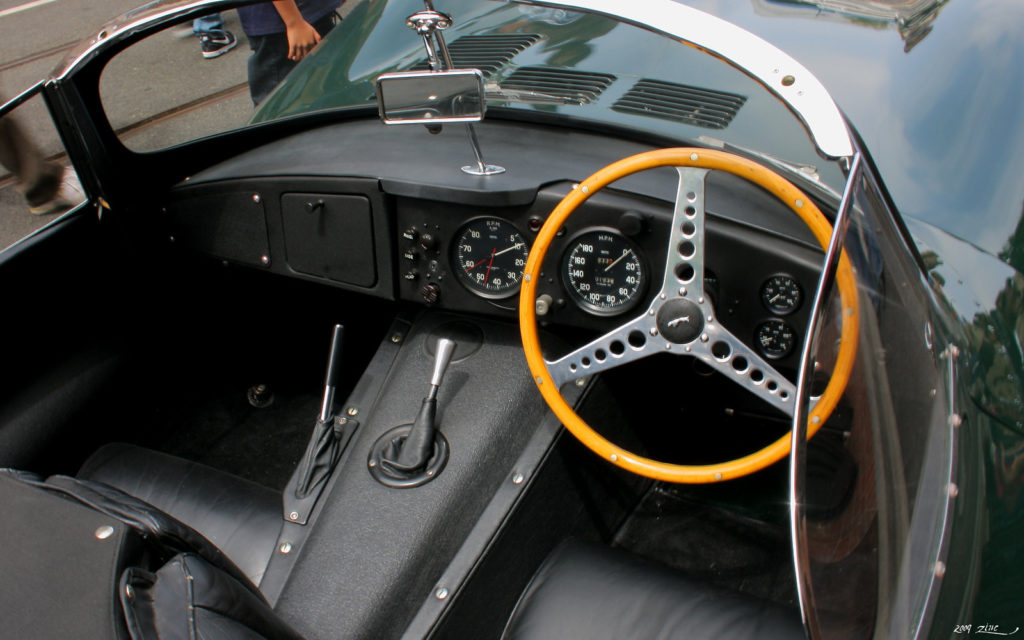
If you appreciate the balance between racing capability and grand touring comfort, the XKSS cockpit delivers both with its perfect mix of competition focus and luxury touches. Green leather covers the seats and center tunnel, while a classic Bakelite steering wheel frames simple white-on-black gauges. The cockpit fits like a well-tailored suit – snug but not restrictive.
This particular car served as Jaguar’s development vehicle for certification. Eastwood bought it in 1972 from a retired racing driver from Northern California. The previous owner actually drove it daily, proving even legendary cars work for everyday use. (Unlike that bread machine sitting unused in your kitchen cabinet.)
2. 1970 Plymouth Hemi ‘Cuda Convertible (Exterior)
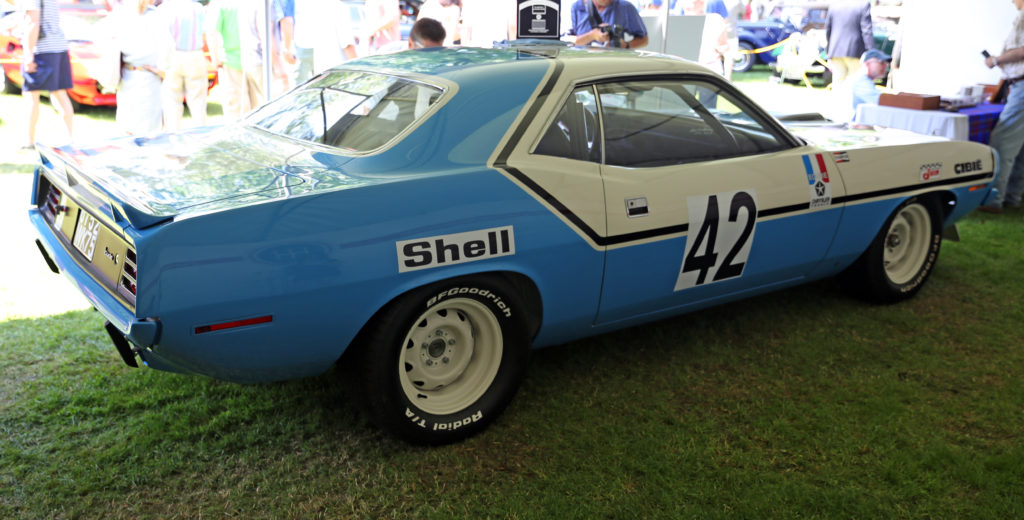
Representing the absolute pinnacle of muscle car rarity, this Plum Crazy Hemi ‘Cuda convertible stands as one of just fourteen built and only four equipped with a four-speed manual. The “shaker” hood scoop trembles visibly when the engine runs – a not-so-subtle hint about the power underneath.
Being one of only fourteen Hemi ‘Cuda convertibles made in 1970 puts this car in a different league of rarity. The white interior creates a striking contrast against that wild purple exterior. The top disappears completely when lowered, creating clean lines that would make any car designer proud.
1970 Plymouth Hemi ‘Cuda Convertible (Interior)
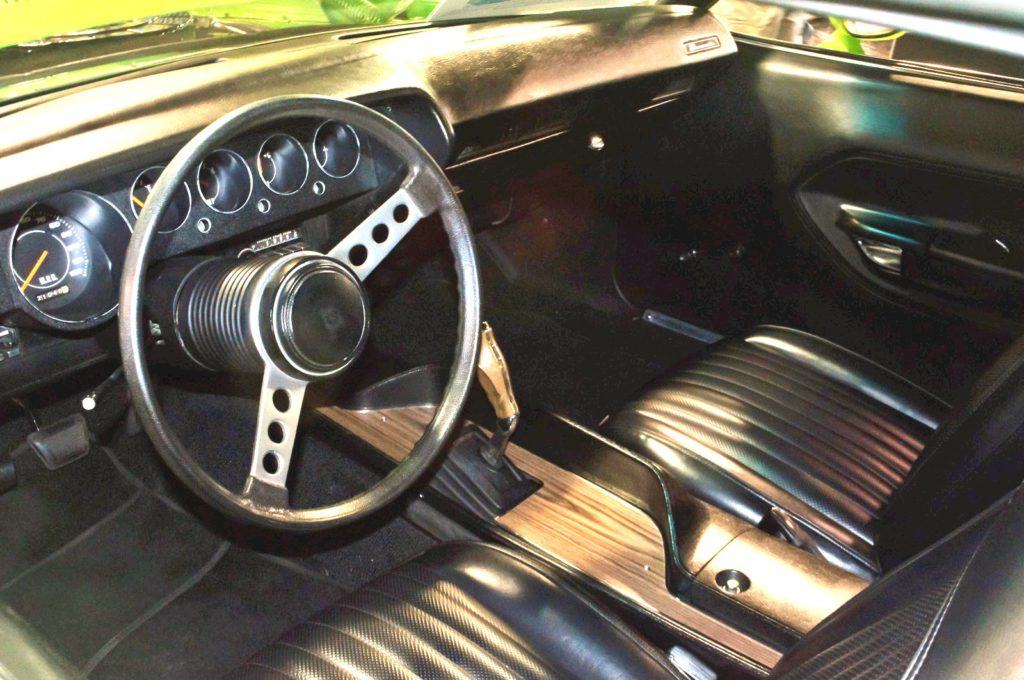
The ‘Cuda’s white leather bucket seats and pistol-grip shifter combine luxury with muscle car attitude, creating the perfect environment for controlling all 465 dyno-proven horsepower. The special stitching patterns you won’t find on lesser Plymouths, reminiscent of most breathtaking muscle cars from the 80s, adds to its exclusive feel. The pistol-grip shifter connects to the four-speed manual – making this one of just four Hemi ‘Cuda convertibles so equipped.
The mighty 426 Hemi engine officially made 425 horsepower, but dyno testing showed 465 real-world horsepower. Eastwood found this time capsule in Montana, where it sat preserved with under 16,000 miles. Finding this car was like discovering someone left a perfectly preserved dinosaur in their garage.
1. 1964 Ferrari 250 GT Lusso (Exterior)
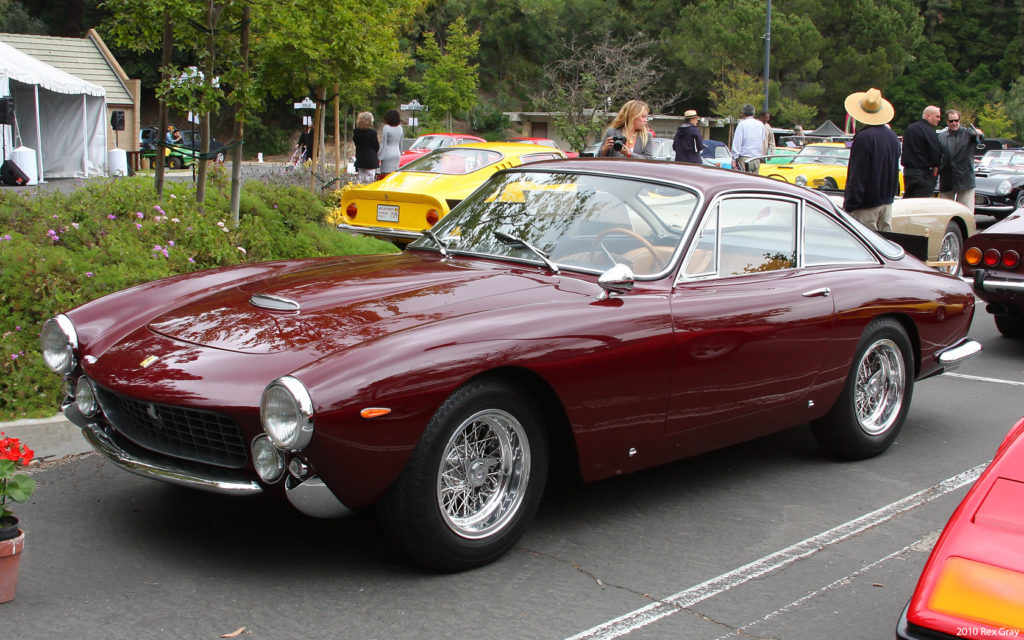
For those who believe automotive design peaked in the mid-1960s, the flowing lines of the final Lusso ever producedoffer compelling evidence you’re correct. The Pininfarina-designed body features flowing lines that make modern Ferraris look busy by comparison. Deep burgundy paint highlights every perfect curve and surface transition on this rolling sculpture.
Delicate chrome bumpers and the egg-crate grille define its elegant face. Even Steve McQueen tried buying this exact car from Eastwood in 1967 but couldn’t convince him to sell. This car represents the automotive equivalent of a perfect sunset – something so naturally beautiful it seems impossible to improve upon.
1964 Ferrari 250 GT Lusso (Interior)

Surrounded by hand-stitched tan leather and faced with those distinctive center-mounted Veglia gauges, you experience exactly what Eastwood felt driving away from the Ferrari factory in 1964. The tan leather covers nearly everything – seats, dashboard, door panels – creating a warm, inviting environment. The unique center-mounted gauges cluster makes them equally visible to driver and passenger.
Clint bought this car in 1964 right after finishing “A Fistful of Dollars” and drove it straight from Ferrari factory to Spain for filming his next movie. Since then, this Ferrari has appreciated approximately 8700%. That’s not just an investment – that’s basically printing money while enjoying one of the most beautiful cars ever made.




